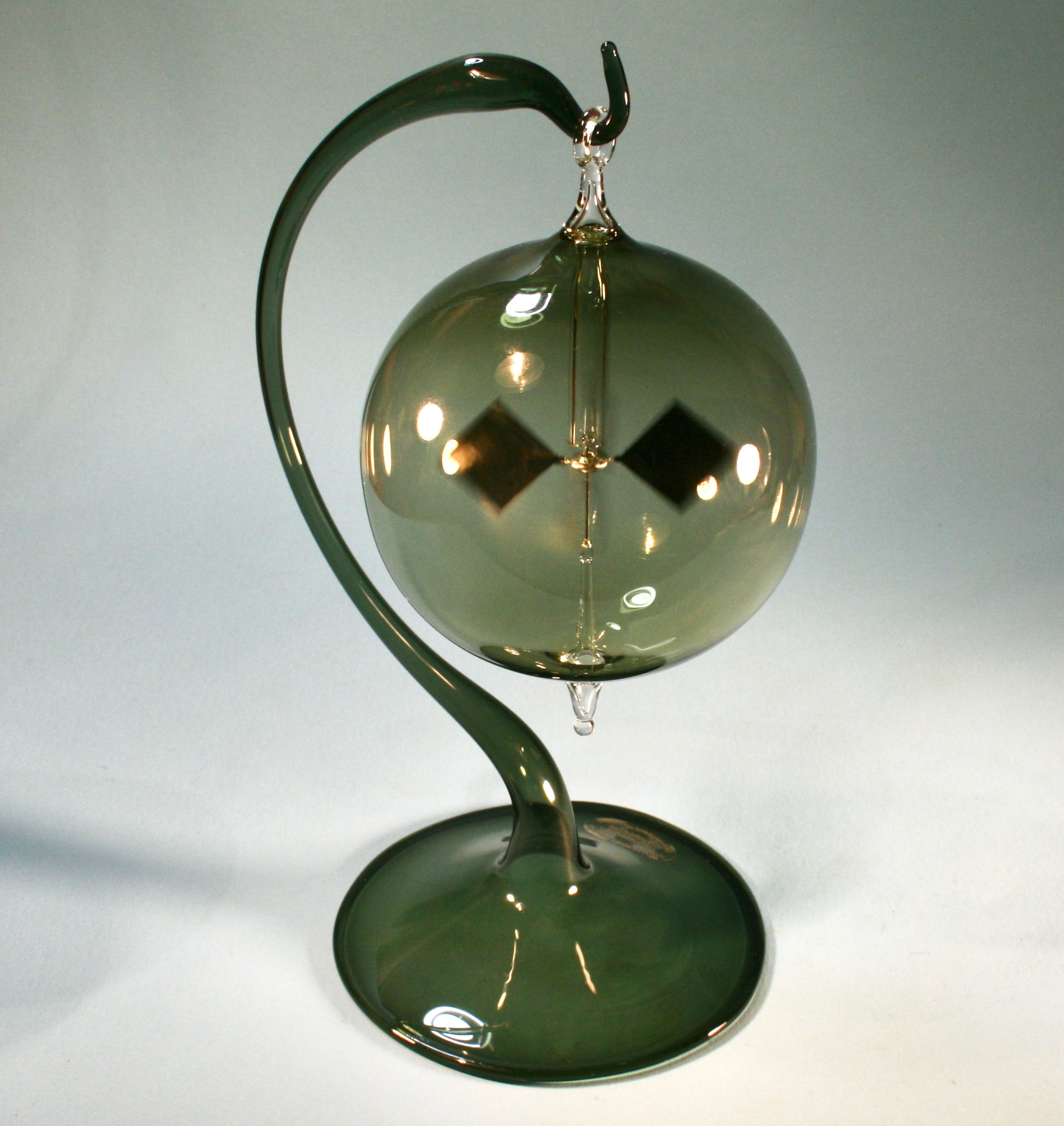

Title: Crookes Solar-Powered Radiometer Light Technical Science Toy
Shipping: $29.00
Artist: N/A
Period: 20th Century
History: Art
Origin: North America > United States
Condition: N/A
Item Date: N/A
Item ID: 103
crookes solar radiometer Light with hanging glass bracket. The solar-powered radiometer original German / Room Decorating Idea, technical toy, functional gift The Lupi is the world's smallest sun source in the world. Lupi clear with a standing frame, Diameter 8 cm, height approximately 21 cm. The Crookes radiometer, also known as the light mill or solar engine, consists of an airtight glass bulb, containing a partial vacuum. Inside are a set of vanes which are mounted on a spindle. The vanes rotate when exposed to light. The reason for the rotation has been the cause of much scientific debate. It was invented by the chemist Sir William Crookes as the by-product of some chemical research. In the course of very accurate quantitative chemical work, he was weighing samples in a partially evacuated chamber to reduce the effect of air currents, and noticed the weighings were disturbed when sunlight shone on the balance. Investigating this effect, he devised the device named after him, still manufactured and sold to this day as a curiosity item. 'The light mill - also known as Radiometer - An educational, Physikalische demonstration object that has 1872 from English physician was actually invented Crookes. This neat little physikalisch Technical Wonder provides a vivid way it light is transformed into kinetic energy. Meets warm light, meaning it is sun, and not neon light for conventional light bulbs (but no cold light) on on a ruhende wing cross, as is this depending on thickness of the light source. The light mill is Glasxpert are traditionally handmade in front of the cornice quality (mouth blown, hand-shapedformed. The product is handmade and unique. Real craftsmanship. Procedure: 1. Place radiometer in full sunlight, make sure that there is no cloud cover, or that it is minimal. 2. Make some observations about the rotation of vanes while it is outside. Talk about the speed of the vanes 3. Place the radiometer under a fluorescent lamp in the lab. Make sure to turn off the overhead lights in the classroom. Observe rotation of vanes and make some observations about the speed of the vanes. 4. Place radiometer under an ultraviolet lamp in the lab. Make sure to turn off the overhead lights in the classroom. Make some observations about the speed of rotation of the vanes. 5. Place the radiometer under an incandescent light source. Make some observations about the speed of the vanes in the radiometer.
A radiometer consists of a set of vanes, each white, or light in color, on one side and blackened on the other. When exposed to light, the vanes revolve. The black surface is warmer than the white one and that gas molecules will recoil faster from the hot surface. The difference in molecule movement is what causes the device to spin. The first radiometer was constructed to settle the controversy regarding whether light exerts a force. Even though it failed to do this it did show that the dark surface would cause the air molecules to recoil faster from the dark surface than the light surface. When different types of light are used the vanes of the radiometer will spin at different speeds. This is due to the energy from the light source. Each different light source will give off different wave lengths due to the type of light bulb being used.
Link: https://en.wikipedia.org/wiki/Crookes_radiometer
The Crookes radiometer (also known as a light mill) consists of an airtight glass bulb containing a partial vacuum, with a set of vanes which are mounted on a spindle inside. The vanes rotate when exposed to light, with faster rotation for more intense light, providing a quantitative measurement of electromagnetic radiation intensity.
The reason for the rotation was a cause of much scientific debate in the ten years following the invention of the device, but in 1879 the currently accepted explanation for the rotation was published. Today the device is mainly used in physics education as a demonstration of a heat engine run by light energy.
It was invented in 1873 by the chemist Sir William Crookes as the by–product of some chemical research. In the course of very accurate quantitative chemical work, he was weighing samples in a partially evacuated chamber to reduce the effect of air currents, and noticed the weighings were disturbed when sunlight shone on the balance. Investigating this effect, he created the device named after him.
The radiometer is made from a glass bulb from which much of the air has been removed to form a partial vacuum. Inside the bulb, on a low friction spindle, is a rotor with several (usually four) vertical lightweight vanes spaced equally around the axis. The vanes are polished or white on one side and black on the other.